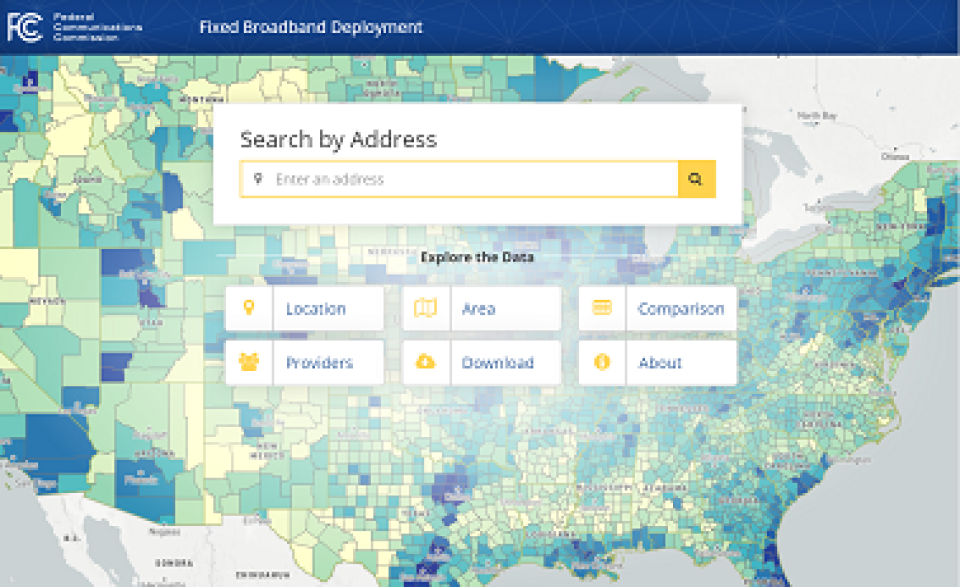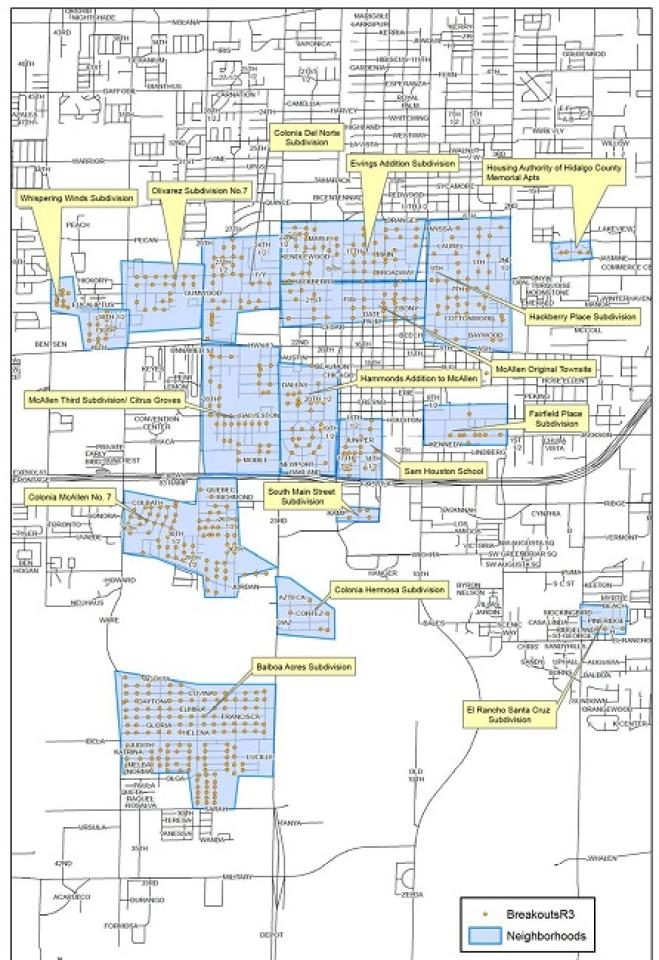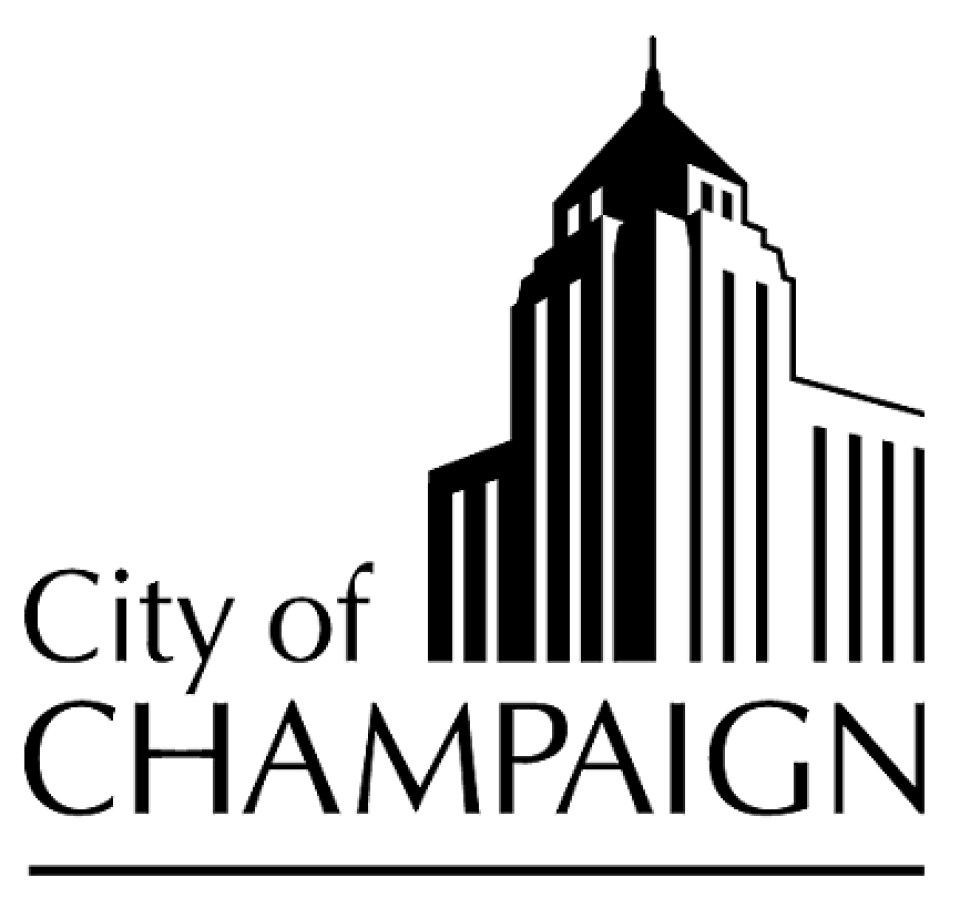
Fast, affordable Internet access for all.

Four times a week, from 1960 to 1968, a plane marked with the insignia of the Midwest Program on Airborne Television Instruction (MPATI) took off from the Purdue University Airport in West Lafayette, Indiana and flew a figure-eight pattern above Montpelier. At an altitude of 23,000 feet, the DC-6AB aircraft used onboard Stratovision to broadcast pre-recorded courses to schools in Indiana, Illinois, Kentucky, Michigan, Ohio and Wisconsin. The 200-mile radius of the broadcast was estimated to cover 5 million students in 13,000 schools, though only about 1,800 schools became paying members.
With seed money from the Ford Foundation, it sparked hope that the MPATI program, which predated widespread cable or satellite TV, would serve as a model for how educators could use the cutting-edge technology of the day to make top-flight education more accessible to students in rural America. The experiment lasted for eight years until the two-plane fleet was permanently grounded due to financial difficulties and, ironically, a National Association of Educational Broadcasters study that argued MPATI used too much of the UHF television spectrum.
Today, the Purdue Research Foundation's Innovation Partners Institute (IPI) has resurrected the spirit that gave wings to MPATI in an effort to reach students in the Kankakee Valley School Corporation with a pilot program of a different sort. Instead of using Stratovision and airplanes, IPI has partnered with Wabash College, SBA Communications, Watch Communications, and the State of Indiana to connect 500 households to a wireless broadband network in support of remote learning.
“I was tasked with leading the ‘Safe Campus’ initiative at Purdue (University) when Covid hit, which accelerated the potential of adapting new technology. What we realized is that when it comes to learning, especially in rural areas of Indiana, one in four students don’t have connectivity,” said David Broecker, Chief Innovation and Collaboration Officer at the Purdue Research Foundation, which manages Purdue’s Discovery Park District.
As House GOP leaders ask the Government Accountability Office to audit the U.S. Department of Agriculture (USDA) ReConnect program because of concerns federal funds are being used to “overbuild,” Democratic leaders in the House and Senate have filed legislation that aims to build broadband infrastructure on a national-scale.
The Accessible, Affordable Internet for All Act is a bill that harkens back to when the federal government – through FDR’s Rural Electrification Administration, established in 1935, and the Rural Electrification Act, passed by Congress in 1936 – invested in local cooperatives and brought electricity to the abundance of Americans still living in candle-lit homes without electrically-powered refrigerators.
The proposed legislation may well frame the Democratic agenda on broadband moving forward, as the Biden administration enters the White House in January. It’s a bold bill that has garnered the support of a who’s-who of broadband experts and advocacy organizations from Public Knowledge, the National Consumer Law Center and New America Foundation’s Open Technology Institute to the Benton Institute for Broadband and Society, the Electronic Frontier Foundation, and the National Digital Inclusion Alliance.
Breaking it Down
There’s a lot to unpack in this bill, which is why we are publishing a series of posts exploring the major sections contained in the proposed legislation. This first installment is the 30,000-foot view. Forthcoming posts will examine the legislative details where the devil – or the better angels – can be found.


This week on the podcast, Christopher talks with Maureen Neighbors, Energy Division Chief of the Alabama Department of Economic and Community Affairs, about the state’s one-of-a-kind, $100 million voucher program designed and deployed for the current school year to help get and keep economically vulnerable students connected.
She tells Christopher how, with the help of CTC Energy and Technology, the state brought together more than three dozen Internet Service Providers (ISPs) — many of which are local companies — connected with school districts around the state, designed an online portal, and mailed out tens of thousands of brochures to households with students on the free or reduced lunch program to help those families to start new service or pay their existing broadband bill.
Maureen shares the challenges they met (data and mapping are hard, and wrangling 37 ISPs equally so) and the satisfaction in helping more than 120,000 students (and counting!) stay connected to school during the ongoing pandemic.
This show is 32 minutes long and can be played on this page or via Apple Podcasts or the tool of your choice using this feed.
Transcript below.
We want your feedback and suggestions for the show-please e-mail us or leave a comment below.
Listen to other episodes here or view all episodes in our index. See other podcasts from the Institute for Local Self-Reliance here.
Thanks to Arne Huseby for the music. The song is Warm Duck Shuffle and is licensed under a Creative Commons Attribution (3.0) license.
Over the summer, Chicago Mayor Lori Lightfoot announced a new program to bring high-speed Internet service to the alarming number of households who do not have reliable access within the nation’s third-largest school district.
The initiative, referred to as Chicago Connected, aims to provide free high-speed Internet service to approximately 100,000 Chicago Public Schools (CPS) students. One of the ground-breaking features of the effort is that it includes funds to enlist the support of a number of Community Based Organizations to assist with enrollment in the program, digital literacy and skills development training.
At the end of September, during a virtual town hall meeting, Mayor Lightfoot said that while CPS was making progress connecting eligible families, they had not yet reached the goal.
“We’re not where we want it to be. And I think part of the difficulty is, even though it’s free, it’s about making sure that families feel safe in signing up,” Lightfoot said. “Currently, we have over 25,000 households that are signed up, and that is the equivalent of almost 38,000 students towards our goal of 60,000 households at 100,000 students.”
How It Works
Using a sponsored service model, Chicago Connected seeks to provide the high-speed connection for up to four years by directly paying for the service for eligible families. The program primarily relies on donations from philanthropic partners, CPS and city funds, with an additional $5 million from the CARES Act to fund the $50 million program. Donations, which includes a $750,000 commitment from former President Barack Obama and First Lady Michelle Obama, will cover the first two years, with CPS paying for the third and fourth years.
Seattle, Washington sits at the technology epicenter of the Pacific Northwest, and its residents have historically enjoyed better wireline Internet access options than many Americans across the country. A new report, Seattle Internet for All [pdf], provides a wealth of analysis which identifies those remaining in the city who struggle to get online. And while it outlines a detailed set of steps the city can do to reach the 5% or so of residents who report not having any subscription, most of them remain small, with no bold strategies offered to solve the connectivity gap once and for all.
The report comes as a result of the Internet for All Resolution passed by the city council in July in order to address digital divide amplified by the ongoing pandemic. While the city has been successful in increasing Internet access over the last five years, there are important income- and race-based gaps that still need to be fixed. Currently, the report says, 17,575 households with 37,365 residents sit on the other side of the adoption gap, and it concludes that the majority of the disparity is driven by affordability and a lack of digital skills.
Summary of Findings
The report argues that Seattle remains one of the most connected cities in the country, with 93% of the city having access to gigabit broadband from one or more Internet Service Providers (ISPs); according to the FCC Form 477 data (which itself overstates competition) that number sits at 75%, but in either case it's worth noting that for Comcast and Wave subscribers this will be asymmetric gigabit with far slower upload speeds.
Over the last few months, a number of cities across the country have recognized the pressing need to find a way to get those in their community without Internet access connected. In San Rafael, California, San Antonio, Texas, and Champaign, Illinois, local governments along with a variety of philanthropic, technical, and private partners have developed a host of innovative ways to bring fixed wireless solutions to neighborhoods in need.
The city of McAllen (pop. 140,000) — near the mouth of the Rio Grande, at the southern tip of Texas — offers some additional lessons to be learned and a blueprint for success for other local governments thinking of doing the same. Quietly over the summer, it collected broadband data, designed, and deployed a fixed wireless network which to date covers more than three dozen neighborhoods and provides free connectivity for the city’s students and residents.
Fiber From the Water Tower
Citywide Wi-Fi has been a long time coming in McAllen. Mayor Jim Dalson and the IT Department have wanted to do it for years, IT Director Robert Acosta said in an interview, but finding a way to pay for it has been the major barrier. In the meantime, his department has been adding wireless coverage to public spaces for the past half decade, at city parks, outside of government facilities, at the Museum of Art and Science, and at the Boys and Girls club. He also extended the network to traffic cameras, water towers, and other government facilities, and when the pandemic hit his department had more than 60 miles of fiber to call upon.

When school shut down past spring, Unit 4 schools in Champaign, Illinois scrambled to get students connected like everyone else. The district handed out Chromebooks and teachers went to work transitioning to online instruction so the school year could continue. But the district noticed that a large percentage of its students weren't logging on and the bulk of them came from Shadowwood mobile home park, where although fiber ran up and down every street in the neighborhood only one family subscribed to wireline Internet access. So Mark Toalson, the city’s IT Director, began making calls, and by the end of the summer a coalition came together to build Shadowwood’s students a free fixed wireless network which went online in August.
Fiber Just a Few Feet Away

The mobile home park sits on the north side of the town of 90,000, and is largely populated by Hispanic residents. Roughly 250 students who attend the Unit 4 school district live there, and according to Toalson not a single one had Internet access beyond personal mobile phones before they began last spring. In late May Mayor Deborah Feinen asked the city manager what could be done, and Toalson was asked to take on the project.
A new report out by North Carolina's Broadband and Infrastructure Office looks at the ways that broadband and telehealth can solve some of the disparities that disproportionately affect tens of thousands of its citizens living in the western fifth of the state. These “coal-impacted communities,” it argues, would benefit greatly across a host of interventions which would be facilitated by investment in wireline broadband infrastructure, technical assistance, and digital literacy programs. If implemented, they would increase access to medical doctors and mental health professionals for all North Carolinians, eliminate barriers related to transportation, reduce state healthcare costs, increase the speed of intervention and reduce the time to diagnosis, and eliminate unnecessary hospital and emergency room admissions.
Healthcare in the High Country
"Carolina Crosscut: Broadband and Telehealth in North Carolina's Appalchain Coal-Impacted Communities" [pdf] comes out of a $100,000 Appalachian Regional Commission grant given to the Office of Broadband Infrastructure and the Office of Rural Development for two purposes: to figure out broadband availability and adoption as they relate to health disparities across the twenty-county region clustered along the state’s western border, and to map assets and come up with specific policy recommendations for state agencies and lawmakers.
These are North Carolina’s “coal-impacted” communities, which the report defines as those which exhibit a “generational dependence on coal extraction and related supply chains [which] has resulted in personal and community economic devastation.” To be clear and despite its title, the framing here is economic, and not based on the adverse health effects of working in coal extraction. It should also be noted that the economic impact described in the report surely extended beyond the twenty counties at the center of the study.
Millions of students do not have access to adequate connectivity, but Black, Latinx, and Native children are disproportionately impacted by the “homework gap” — a term that describes the divide between students with access to home broadband and Internet-enabled devices and those without, as well as the challenges that unconnected students face. One study found that children in one out of every three Black, Latinx, and Native American households did not have broadband access at home.
These disparities are even more pressing during the ongoing Covid-19 pandemic, which has turned the homework gap into a chasm. Schools across the country cancelled in-person instruction at the end of the last school year, and many continue to make plans for remote learning in the fall. As the nonprofit Common Sense pointed out in a recent report, “The ‘homework gap’ is no longer just about homework; it’s about access to education.”
School districts, cities, and states across the country are distributing hotspots, deploying wireless LTE networks, and paying for students’ Internet plans, among other efforts to quickly address the homework gap. However, many of these solutions are stopgap answers to a systemic problem.
UnidosUS President and CEO Janet Marguía said in a press release:
The COVID-19 pandemic has exposed the impact of the digital divide on the academic progress of our students, particularly from low-income, Black, Latino, and American Indian households. Roadblocks, including internet connectivity and access to a computer or tablet, have denied students of color the opportunity to meaningfully engage in online learning, resulting in learning loss and widening achievement gaps . . . We cannot continue to overlook the disproportionate impact of this divide.
Mind the Gap
“An adequate connection is no longer a matter of convenience; it is a necessity for anyone wishing to participate in civil society,” wrote the New York Times Editorial Board in an opinion article published on Sunday. Yet, tens of millions of Americans still lack reliable access to broadband connectivity.
The Times editorial echoed the concerns of many digital equity advocates, who have been ringing alarm bells ever since the Covid-19 pandemic moved most aspects of everyday life online, cutting off anyone without a home Internet connection.
To help bridge the gap, many states and localities have deployed free Wi-Fi hotspots to schools, libraries, and other public spaces. But, as the Times points out, this is not enough — the federal government must do more to connect our communities. “[T]he coronavirus has demonstrated that it is time for the federal government to think more creatively and to act more swiftly to deploy broadband service,” argued the editorial, pointing to legislation that would make an impact, including the Accessible, Affordable Internet for All Act and the Rural Broadband Acceleration Act.
Digital Divides Threaten Students’ Education
Inadequate Internet access isn’t only a problem in rural areas, where broadband infrastructure isn’t always available. Many city residents also lack home connectivity, due to the high cost of a subscription. The Times explained:
In urban areas, the struggle to get reliable or affordable Internet service disproportionately affects minorities. The cost of broadband makes it three times more likely that households without Internet service can be found in urban, rather than rural, environments, according to John B. Horrigan of the Technology Policy Institute.